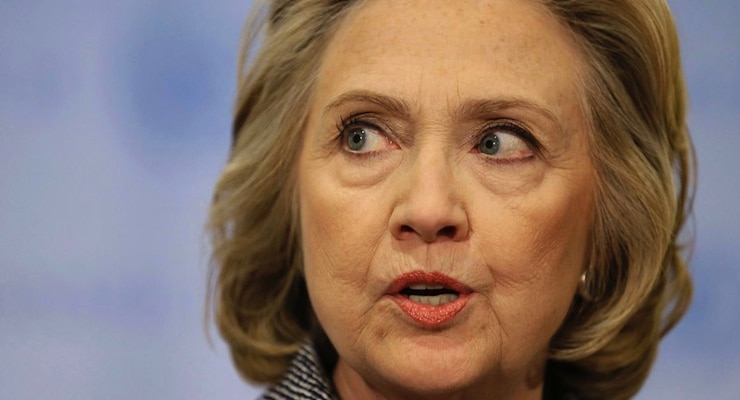

Hillary Rodham Clinton speaks to the reporters at United Nations headquarters, Tuesday, March 10, 2015. Clinton conceded that she should have used a government email to conduct business as secretary of state, saying her decision was simply a matter of “convenience.” (Photo: AP/Seth Wenig)
The State Department said Friday it withheld 22 of Hillary Clinton’s emails from it’s latest dump for containing “top secret” material too damaging to national security for public consumption. Further, another 18 of the former secretary of state’s messages with President Obama were withheld for being protected communications.
According to sources, at least one of Mrs. Clinton’s emails contained information identified as “HCS-O,” which is code relating material to intelligence collected from human spying. This information adds to and backs up a previous report by Fox News earlier this week, which claimed some of the emails contain material from “special access programs,” or SAP, which is considered beyond “top secret” classification.
Department spokesman John Kirby said the intelligence community said the emails contained that high level of sensitivity and the State Department now agrees with that, and upgraded the classification to prevent their release. Worth noting, as Mrs. Clinton has previously claimed, the State Department had challenged the intelligence community’s internal review conclusions that characterized certain emails classified “at birth,” but never had authority to do so since the intelligence did not originate from their agency.
“In consultation with the intelligence community, we are making this upgrade and we believe it’s the prudent or responsible thing to do,” Mr. Kirby said.
While he said none of the emails had information marked classified at the time Mrs. Clinton sent or received them, but said the State Department is still looking into whether they should have been at the time.
Mrs. Clinton’s presidential campaign immediately responded to the news, disagreeing with the State Department’s decision.
“We firmly oppose the complete blocking of the release of these emails,” Clinton spokesman Brian Fallon said in a statement. “Since first providing her emails to the State Department more than one year ago, Hillary Clinton has urged that they be made available to the public. We feel no differently today.”
He then slammed the agencies in charge of reviewing Mrs. Clinton’s emails for sensitive information.
“After a process that has been dominated by bureaucratic infighting that has too often played out in public view, the loudest and leakiest participants in this interagency dispute have now prevailed in blocking any release of these emails,” Mr. Fallon said, calling the decision to withhold the emails “over-classification run amok.”
He said the information was on the unclassified system at the time she sent them, and still remains there. However, for investigators at the Federal Bureau of Investigation (FBI) this is a political, not a criminal defense. At least one email shows Mrs. Clinton directing subordinates to work around the rules. In an email dated June 2011 to Jake Sullivan, she told him to take what were classified talking points and “turn into nonpaper w no identifying heading and send nonsecure.”
The agencies that owned and originated the intelligence–the CIA and National Geospatial-Intelligence Agency, or NGA–reviewed the emails in December to determine how they should be properly stored. The sources, who were not authorized to speak on the record, said that not only were the emails marked “top secret” when they hit Clinton’s server, one of them remains “top secret” even to this day.
Meanwhile, Mr. Kirby said he wouldn’t talk about what was in the 18 emails between President Obama and Mrs. Clinton, and said the administration is not yet asserting executive privilege over them. However, the administration is withholding them for such time as the president can feel he can receive “unvarnished” advice from his circle of advisors.
He also brushed aside questions about whether it was strange that Mrs. Clinton only exchanged 18 messages with Mr. Obama during her four years in office.
“We have found these 18, and I do not expect that there will be more,” Mr. Kirby said.
The FBI has expanded their investigation into Clinton’s email practices to include “public corruption” with the Clinton Foundation. While the agency had been previously investigating potential “gross negligence” relating to her use of a private server to conduct official State Department business, they have begun to scrutinize whether she inappropriately used her role to benefit the foundation and, according to sources, these two investigations are now “inseparable.”






